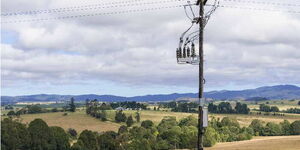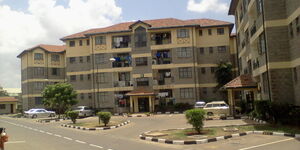Automatic transmission vehicles, popularly known as automatic cars, are motor vehicles whose engine is equipped to change gears progressively with limited human input.
First introduced by Canadian Engineer Alfred Honro Munro in 1921, the first mass production of vehicles was by General Motors in 1939.
The most outstanding difference between automatic and manual transmission vehicles is the gear lever, with the former offering several drive options denoted by letters.
While park, reverse, neutral and drive are common in all vehicles, Kenyans.co.ke looked into other options denoted by letters S, L, W, and M, numbers 1,2,3 and the plus and minus symbols.
Numbers 1,2, and 3
These numbers are found in older models of automatic vehicles. They are linked to the drive (D) gear and allow drivers to alternate between gears depending on the terrain of the road.
The numbers denote levels of gears in their order. D1 gives the vehicle enough power to navigate through muddy terrain or sections of heavy sand coverage.
D2 is similar to the second gear in the manual vehicle. Drivers engage the gear when navigating through hilly sections of the road without losing engine power.
On the other hand, D3 offers drivers the much-needed boost on relatively flat terrain and can be engaged when power is needed during overtaking.
M, + and - Signs
Over the years, modifications were introduced to improve the efficiency of automatic cars. Manufacturers did away with the drive levels 1, 2 and 3 and introduced a manual switch denoted by the letter 'M'.
In line with this, a space was created on the left part of the gear selector. The manual section allows drivers to engage a higher or lower gear when driving.
On the lever platform, manufacturers embedded a plus (+) and minus (-) sign, with the lever enabled to move forward and backwards while engaged in manual.
More advancements were made to retain the M option, but with paddle shifts mounted on the steering column to enable drivers to change gears more conveniently
Letters S, L, and W
S
The letter 'S' stands for Sport Mode and offers drivers more acceleration power by increasing the time spent on one gear level.
While drive mode automatically changes gears once the vehicle gets between 2,500 and 3,000 revolutions per minute, the sport mood allows drivers to stick to the same gear longer for better speeds.
Notably, this mode consumes more fuel due to the acceleration needed to overcome the strain on the gear.
L
This denoted the Low Drive Gear. Selecting this mode means that the vehicle will maintain low gear levels without changing gears to get more power, especially when navigating hilly, muddy or sandy terrain.
In older models, the gear selector was fitted with levels one and two, which perform similar functions as the same gears in manual transmission vehicles.
W
Winter mode also known as snow mode allows motorists to reduce the engine power on the drive wheels to lower the acceleration responsiveness of the car.
It does away with the first gear, which is usually powerful and modifies the torque to reduce the spin while increasing the grip while navigating through the snow.












